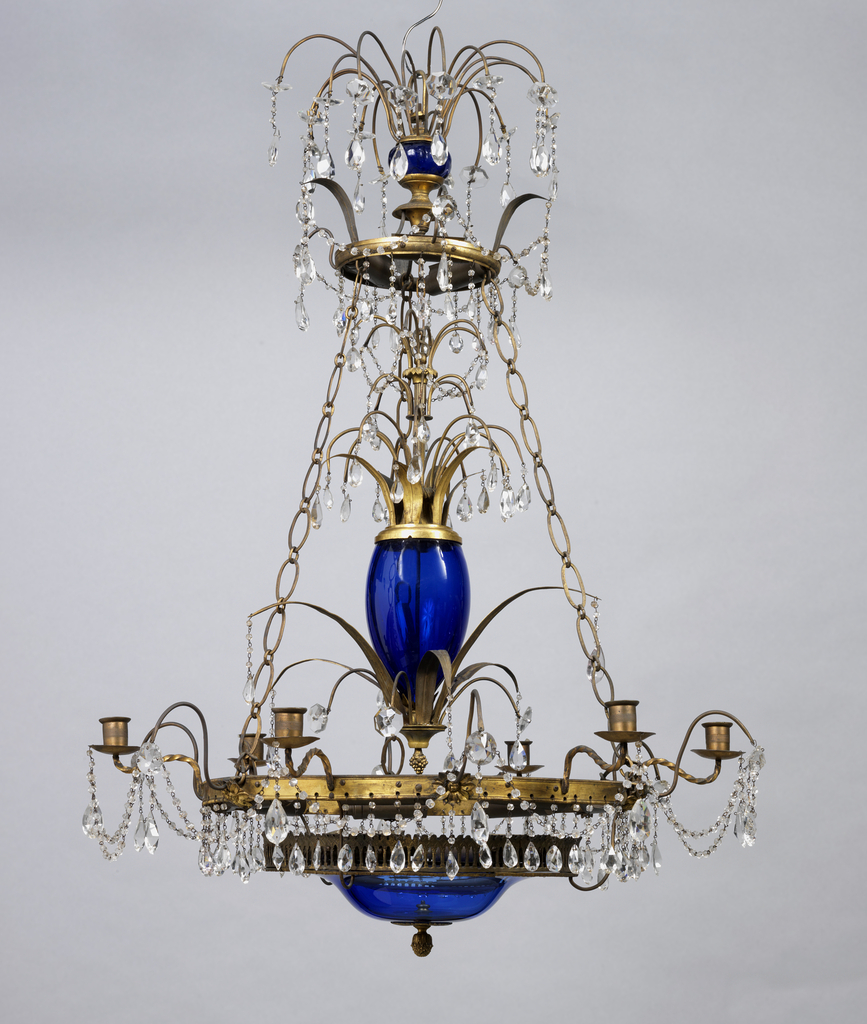This three tiered chandelier in the form of a cascading fountain is garlanded with swags of cut glass drops. Three delicately blown baluster-shaped pieces of cobalt glass are linked by chains of gilt metal. The reserved neoclassical form and use of blue glass strongly indicate that the chandelier was made during the last quarter of the eighteenth century in the Baltic region, most likely in Sweden.
Gustav III (1746 –1792) was King of Sweden from 1771 until his death and his name is synonymous with the Swedish neoclassical style. The Gustavian aesthetic was modeled after the formal classicism of the Louis XVI style. The Swedish king admired the French fashion during his visits to the Palace of Versailles and enlisted French craftspeople to introduce the new style to the Swedish royal palace.
Neoclassicism spread from the court to the urban bourgeoisie, who developed a lighter and simpler interpretation for their town houses and country estates. Where the French court might have used carved rock crystal to decorate chandeliers, the Swedish employed smaller beads of clear glass. Glass was still a luxury product in the eighteenth century. Swedish aristocrats founded factories and hired skilled laborers from Germany or as far away as Venice. By 1700 there were upwards of twenty glassworks established in Sweden, most being situated near the capital of Stockholm. Some factories even owned woodlands to ensure a steady supply of timber for fuel. The state established protectionist policies, placing tariffs on foreign glass and other goods in order to support domestic companies.
At this time, the use of domestic glass by the general public began to increase, particularly in the use of personal glassware for tables and architectural glass. Rising levels in the standards of life and material goods prompted the development of a distinctly Swedish national style of design. Fashionable homes boasted interiors complete with pale colored rooms and sparkling glass chandeliers designed to maximize light during long winters.
Rebekah Pollock is a decorative arts historian specializing in European ceramics and eighteenth-century print culture.

One thought on “The Neoclassical North”
韩国明星同款首饰 on November 26, 2016 at 6:23 am
有耐心的人能钓到大鱼。
韩国明星同款首饰 http://cn.mzuu.co.kr